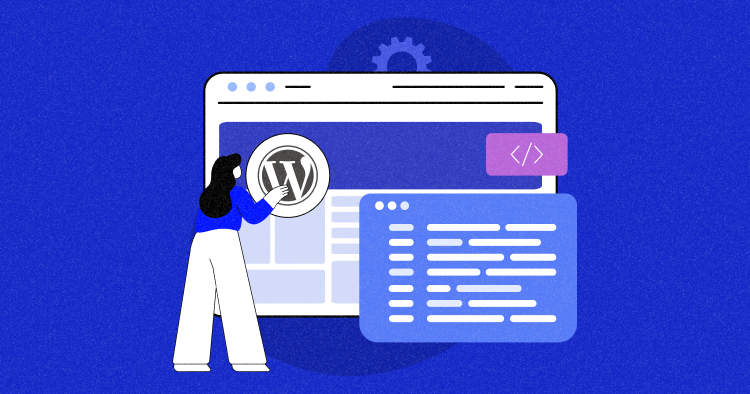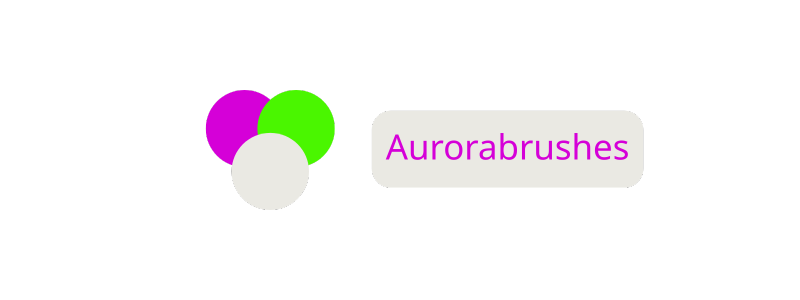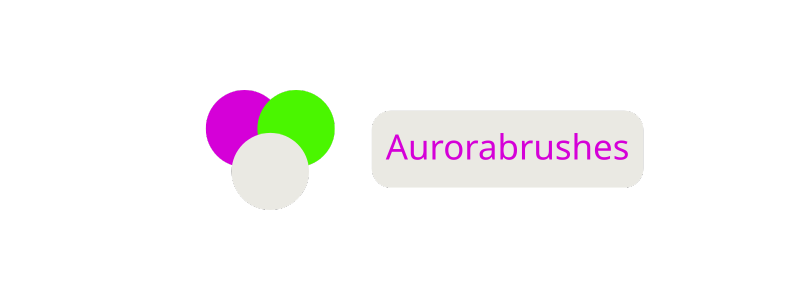How to Create a Custom WordPress Theme: Step-by-Step Guide to Design, Build, and Launch Your Site
Building a website that truly reflects my brand starts with a unique design, and nothing beats creating a custom WordPress theme for that personal touch. I love how a custom theme lets me control every detail, from layout to color scheme, so my site stands out in a sea of lookalikes.
Diving into theme development might seem intimidating at first, but it’s surprisingly manageable once I break it down into steps. With the right guidance and tools, I can bring my creative vision to life and ensure my website runs smoothly across devices.
Understanding Custom WordPress Themes

Custom WordPress themes define the structure, style, and interactivity of a WordPress site. Themes contain template files, PHP functions, CSS stylesheets, and asset directories that all contribute to a unique appearance and feature set. I use custom themes when I require complete control over my site’s branding, navigation, and backend logic, unlike pre-built themes that often restrict layout or sculpting options.
Custom Theme Components
I always organize custom theme folders with distinct files and directories. These files determine how elements load and interact. The table below shows common files and their functions:
| File/Directory | Purpose | Common Requirement |
|---|---|---|
| style.css | Controls overall theme styling and header meta | Essential for all themes |
| index.php | Default fallback template for content rendering | Essential for all themes |
| functions.php | Adds custom PHP functions and features | Used for custom logic |
| header.php | Renders site head and beginning of page | Required for custom branding |
| footer.php | Ends page and inserts footer content | Used for layout consistency |
| sidebar.php | Provides side navigation or widgets | Optional based on site design |
| /assets/ | Stores images, scripts, or fonts | Used for performance optimization |
Advantages Over Pre-Built Themes
Using a custom WordPress theme gives me tailored control that generic templates lack. Customization options, like unique header structures or interactive casino-style widgets, become possible only with direct theme development. I integrate features like user authentication enhancements and performance tuning, which generic themes often neglect or bloat.
When to Build a Custom Theme
I create custom themes when branding, advanced UI requirements, or niche functionalities—such as integrating casino navigation layouts with unique game grids—can’t be met by plugins or existing themes. This approach suits casino platforms, affiliate marketers, and businesses with proprietary user experiences or security requirements.
Comparison Table: Custom vs. Pre-Built Theme Features
| Feature | Custom Theme | Pre-Built Theme |
|---|---|---|
| Branding Flexibility | Unlimited (logotypes, color, layout) | Limited to theme options |
| Casino-Style Layouts | Fully customizable | Rare or generic implementations |
| Performance Optimization | Tailored per site | General optimizations |
| Ongoing Maintenance | Requires manual updates | Supported by theme developer |
| Learning Requirement | Deep WordPress knowledge needed | Minimal technical skills |
I focus on building custom themes when I aim for highly specialized, branded, or high-performance WordPress projects.
Setting Up Your Development Environment
I handle every custom WordPress theme project by streamlining my development environment before writing code. This preparation improves efficiency and reduces errors when building unique designs or functionalities.
Essential Tools and Software
I combine several core tools for custom WordPress theme development:
- Code Editor: Visual Studio Code, Sublime Text, or Atom supports syntax highlighting, version control, and linting.
- Local Server Stack: XAMPP, MAMP, or Local by Flywheel simulate the required web server environment.
- Version Control: Git and platforms like GitHub or Bitbucket track changes and support collaboration.
- Graphic Editor: Adobe XD, Photoshop, or Figma helps in designing mockups and exporting image assets.
- Browser Developer Tools: Chrome DevTools and Firefox Developer Edition diagnose CSS, JavaScript, and HTML issues.
| Tool/Software | Purpose | Example(s) |
|---|---|---|
| Code Editor | Write and manage theme files | VS Code, Sublime Text |
| Local Server Stack | Simulate WordPress locally | XAMPP, MAMP |
| Version Control | Manage project versions | Git, GitHub |
| Graphic Editor | Create design assets and mockups | Figma, Photoshop |
| Browser Developer Tools | Inspect front-end and debug issues | Chrome DevTools |
Installing WordPress Locally
I ensure WordPress runs locally to develop and test custom themes before deployment:
- I install a local server stack such as XAMPP or Local by Flywheel and start Apache and MySQL services.
- I download WordPress from wordpress.org and extract its files into the local server’s web directory.
- I create a new MySQL database using phpMyAdmin.
- I run the WordPress installation wizard by accessing the site in my browser and connect it to the new database.
| Step | Action | Description |
|---|---|---|
| 1 | Install server stack | XAMPP, MAMP, or Local by Flywheel |
| 2 | Download and extract WordPress | Place files in server’s web directory |
| 3 | Create MySQL database | Use phpMyAdmin or similar tool |
| 4 | Run installation wizard | Configure site and database connection |
Efficient local environments let me iterate quickly and launch custom WordPress themes without downtime or public exposure.
Planning Your Custom Theme

Planning a custom WordPress theme streamlines development and aligns site goals with user expectations. I map aesthetics and functionality before coding to ensure my custom theme delivers a consistent user experience.
Defining Design and Functionality
Defining the design and functionality clarifies project requirements. I specify layout structure, typography, color palette, and branding assets. I identify must-have features such as responsive navigation, custom widgets, and plugin compatibility to fit project needs. If building advanced sites like casino platforms, I outline key functionalities including game listings, user account dashboards, and transaction modules.
| Feature Type | Examples (WordPress Context) | Considerations (Casino Platform Context) |
|---|---|---|
| Layout | Header, Footer, Sidebar, Grid | Game grid, bonus banners, sticky headers |
| Typography & Colors | Brand fonts, Scheme guides | High-contrast UI, accessible colors |
| Core Functionality | Blog posts, Custom menus | Leaderboards, user dashboards, live stats |
| Special Elements | Sliders, Galleries, Custom widgets | Game lists, payout tables, odds tickers |
Creating a Blueprint or Wireframe
Creating a blueprint or wireframe visualizes page structure and guides theme logic. I use tools such as Adobe XD, Figma, or Sketch to sketch homepages, archive grids, single content views, and menus. Each wireframe reflects major user journeys and mobile adaptation requirements. Detailed wireframes speed development and minimize redesigns by highlighting component hierarchy and functional placement.
| Wireframe Element | Description | Example Placement |
|---|---|---|
| Header | Logo, menu, search box | Top, fixed navigation |
| Content | Main area, widgets, ads | Center page, sidebars |
| Footer | Contact info, links, credits | Bottom, persistent |
| Mobile Nav | Hamburger, collapsible | Off-canvas, overlay |
Building the Theme Structure
Organizing the WordPress theme directory creates the backbone for custom design and features. I rely on a clear folder structure and carefully crafted core files to streamline development and maintain scalability.
Setting Up Theme Files and Folders
I start by creating a new folder inside wp-content/themes and naming it according to the project, like my-custom-theme. This directory holds all theme assets, templates, and scripts. WordPress recognizes themes by the presence of core files inside this folder.
Here’s a typical file and folder structure I use for custom WordPress themes:
| File/Folder | Purpose | Required |
|---|---|---|
| style.css | Defines theme name, version, styles | Yes |
| functions.php | Registers features, menus, and enqueues scripts | Yes |
| index.php | Fallback template for all pages | Yes |
| header.php | HTML header section, site logo, navigation | No |
| footer.php | Footer scripts and site information | No |
| sidebar.php | Sidebar content and widgets | No |
| /assets/ | Stylesheets, images, JavaScript files | No |
| /template-parts/ | Reusable partial templates (e.g. hero, cards) | No |
| screenshot.png | Theme preview image for admin dashboard | No |
I include only the required files when starting, then add additional templates or asset folders as the project grows.
Creating style.css and functions.php
The style.css file goes in the theme root. At the top, I place the theme header comment block, which provides WordPress with details like the theme name, author, and version. For example:
/*
Theme Name: My Custom Theme
Theme URI: https://example.com/
Author: My Name
Author URI: https://example.com/
Description: Custom WordPress theme for advanced projects
Version: 1.0
License: GNU General Public License v2 or later
Text Domain: my-custom-theme */
Below the header, I add default CSS rules for typography, layout, and responsive design elements.
The functions.php file registers theme functionalities. I use it to enable features like menus, post thumbnails, and enqueue front-end scripts or styles. Here’s a sample snippet:
<?php
function my_custom_theme_setup() {
add_theme_support('title-tag');
add_theme_support('post-thumbnails');
register_nav_menus([
'primary' => __('Primary Menu', 'my-custom-theme')
]);
}
add_action('after_setup_theme', 'my_custom_theme_setup');
If I require asset loading, I enqueue styles and JavaScript with:
function my_custom_theme_enqueue_scripts() {
wp_enqueue_style('main', get_stylesheet_uri());
wp_enqueue_script('theme-js', get_template_directory_uri() . '/assets/js/theme.js', [], false, true);
}
add_action('wp_enqueue_scripts', 'my_custom_theme_enqueue_scripts');
Using this structure and these files, I support scalable and maintainable custom WordPress theme development for both standard and advanced projects.
Developing Core Theme Features

Developing core theme features shapes the custom WordPress experience. I focus on structuring templates, enabling functions, and integrating custom widgets to meet the specific requirements of each project.
Creating Template Files
Creating template files structures the core layout and display logic of the custom WordPress theme. I start with the required files to ensure compatibility:
| Template File | Function | Required (Yes/No) |
|---|---|---|
| style.css | Defines theme metadata and global styles | Yes |
| index.php | Serves as a fallback for all templates | Yes |
| functions.php | Adds features, actions, and filters | Yes |
| header.php | Outputs header section and loads assets | No |
| footer.php | Outputs footer section | No |
| sidebar.php | Displays widgetized sidebars | No |
| page.php | Displays individual static pages | No |
| single.php | Displays individual posts | No |
| archive.php | Outputs archive pages (categories, tags) | No |
| 404.php | Displays custom 404 error pages | No |
Each template file handles specific content types or sections. For example, single.php outputs individual WordPress posts, while archive.php manages category or tag archives. I reference the WordPress Template Hierarchy to determine how WordPress selects templates for any given request.
Adding Custom Functions and Widgets
Adding custom functions and widgets extends site interactivity and branding. I register navigation menus or widgetized areas with register_nav_menus and register_sidebar. I create custom widgets using WP_Widget as a base class, giving the theme unique elements like promotional banners, social media embeds, or interactive features.
Common functions I define include:
| Functionality | Example Function | Context |
|---|---|---|
| Enqueue Styles/Scripts | wp_enqueue_style, wp_enqueue_script | Load assets |
| Register Menus | register_nav_menus | Navigation |
| Register Sidebars/Widgets | register_sidebar | Widget areas |
| Add Theme Support | add_theme_support (e.g., post-thumbnails) | Media, features |
Adding action and filter hooks increases customization without changing core files. I hook into after_setup_theme to register support for custom logos or thumbnails. I hook into widgets_init to load custom widget areas.
Integrating Casino-Specific Features
When building a casino-focused custom WordPress theme, integrating casino-specific features supports advanced interactivity and industry compliance. I implement specialized templates for game listing archives and single game detail pages. I develop custom post types for games, using register_post_type to structure and display casino games separately from standard posts. User account dashboards leverage custom page templates and shortcodes for secure login, registration, and profile management.
| Casino Feature | Implementation Method | Impact |
|---|---|---|
| Game Listings | Custom post type + archive template | Organized, scalable |
| Single Game Details | Single-game template + metadata fields | Rich game information |
| User Dashboards | Custom templates + shortcodes | Account management |
Integrating these casino-specific components tailors the custom theme to support regulatory, usability, and operational needs unique to gaming websites.
Testing and Debugging Your Theme
I confirm my custom WordPress theme meets standards by conducting a structured testing and debugging process. These checks help me maintain a smooth user experience, device compatibility, and error-free site functionality.
Ensuring Responsiveness and Compatibility
I verify responsiveness across devices and browsers to ensure my theme delivers consistent site experiences. I use browser resizing tools and device emulators, then test on actual hardware when possible. Key viewport breakpoints include 320px (mobile), 768px (tablet), and 1024px (desktop). I run compatibility checks on Chrome, Firefox, Safari, and Edge to catch rendering differences.
Responsiveness and Compatibility Testing Table
| Test Category | Tool/Method | Example Device/Browser | Objective |
|---|---|---|---|
| Responsiveness | Chrome DevTools, BrowserStack | iPhone 13, Galaxy S22 | Confirm visible layouts adapt |
| Cross-browser | Live browsers | Firefox, Safari, Edge | Avoid style/function discrepancies |
| Retina/HiDPI | Real device | MacBook Pro Retina | Display high-res assets correctly |
| Touch Controls | Touch device | iPad, Android Tablet | Validate tap, swipe, and scroll |
Troubleshooting Common Issues
I address common theme issues by isolating problems and applying targeted fixes. I review the browser console for errors, enable WordPress debug mode for PHP notices, and deactivate plugins to find conflicts. Typical issues and solutions are summarized below.
Common WordPress Theme Issues Table
| Issue | Detection Method | Resolution Example |
|---|---|---|
| Styles not applying | Inspect Element | Confirm enqueued stylesheet paths |
| Broken page layout | Browser Developer Tools | Check HTML structure, fix container classes |
| JS errors or no interactivity | Console/Error Logs | Update/re-register JS files |
| White screen or fatal error | Enable WP_DEBUG | Correct PHP syntax or missing files |
| Plugin conflict | Deactivate All Plugins | Reactivate one by one to isolate |
Testing Custom Casino Game Features
I extend test coverage for casino projects by focusing on interactive game elements and regulatory requirements. I simulate real user flows, such as account registration and deposits, then validate secure data handling and fair randomization for games. Specialized tests focus on responsible gambling features, like self-exclusion and session time tracking.
Casino Theme Feature Testing Checklist
- Simulate login, registration, and account management scenarios
- Test dynamic listing and filtering of games
- Confirm game randomization through seed checks or audit tools
- Validate payment integration using sandbox environments
- Test compliance features: age verification, self-exclusion, and session timers
These targeted approaches let me deliver a robust custom WordPress theme with reliable performance, regardless of industry focus.
Deploying Your Custom WordPress Theme
Deploying a custom WordPress theme transitions the project from local development to a live or staging site. This step verifies theme functionality in a site environment and prepares it for use by site visitors.
Preparing for Upload
Preparing a custom theme for upload involves organizing files, validating code, and ensuring compatibility. When files are properly packaged, WordPress recognizes the theme on the site dashboard.
| Preparation Task | Description | Tools/References |
|---|---|---|
| Directory Structure | Structure theme folder with nested assets, CSS, JS | Theme Handbook, WP Codex |
| Clean Code | Remove debug or unused code, minify CSS/JS | VS Code, Prettier |
| Code Validation | Validate files against WP and PHP standards | PHPCS, Theme Check |
| Asset Optimization | Compress images, limit unused assets | ImageOptim, TinyPNG |
| ReadMe/Documentation | Include theme usage and dependencies guide | Markdown (.md) files |
| Theme Screenshot | Add screenshot.png (880×660 px, <150 KB) | Photoshop, Figma |
| Archive Compression | Compress into a ZIP file for upload | macOS/Windows zip tools |
When files are prepared using these steps, the theme installs smoothly through the WordPress dashboard without compatibility issues.
Activating and Configuring the Theme
Activating and configuring a custom theme publishes the design and enables features for the live WordPress site.
- Theme Upload: I log in to WordPress, go to Appearance > Themes, and click Add New > Upload Theme. I upload the ZIP archive and click Install Now.
- Theme Activation: I activate the new theme. If functions.php and style.css are detected, WordPress confirms with a success message.
- Basic Configuration: I navigate to the Theme Customizer (Appearance > Customize) to adjust logo, primary colors, menus, and widget areas defined in the theme’s functions.
- Dependency Plugins: I install any required or recommended plugins identified in the theme’s readme or admin notifications.
- Feature Testing: I test core pages, menus, widgets, and any advanced features, verifying smooth operation and front-end rendering.
- Permalink Refresh: I update permalinks from Settings > Permalinks to clear any routing issues that might arise due to new templates.
| Configuration Step | Action Taken | Expected Outcome |
|---|---|---|
| Theme Upload | Upload ZIP file | Theme listed in dashboard |
| Theme Activation | Click Activate | New design becomes live |
| Customizer Setup | Adjust site identity, colors, menus | Branded look matches intention |
| Widget Assignment | Place widgets in designated sidebars/areas | Widgets display correctly |
| Plugin Activation | Enable any required plugins | Features work as intended |
| Permalink Refresh | Save permalinks settings | Site links resolve properly |
When following these activation and configuration steps, the custom theme integrates seamlessly into the WordPress ecosystem.
Advanced Configuration for Casino Sites
Advanced configuration extends to casino platforms due to custom gaming features and compliance requirements.
| Casino Feature | Configuration Task | Reference/Compliance |
|---|---|---|
| Game Listings | Assign custom post types, enable filters | WP Custom Post Types API |
| Secure User Dashboards | Test login, registration, and security | WP User Roles, SSL Certs |
| Regulatory Plugins | Activate plugins for geolocation, KYC | WP GeoIP, Gravity Forms |
| Payment Integration | Configure compatible gateways, test flows | WP payment plugins |
| Auditing & Logging | Enable error logs, set up audit trails | Security Audit Plugins |
When casino features are properly configured, they meet industry standards and deliver a compliant, user-focused experience.
Conclusion
Creating a custom WordPress theme opens up endless possibilities for building a site that truly matches your vision. With the right tools and a structured approach I’ve found that even the most complex projects become manageable and rewarding.
As you continue to refine your theme don’t hesitate to explore new design trends and experiment with advanced features. Every step you take brings you closer to a unique and high-performing website that stands out in any industry.
Frequently Asked Questions
What is a custom WordPress theme?
A custom WordPress theme is a tailor-made design built specifically for your website, giving you complete control over layout, styling, and features, unlike pre-built themes that offer limited customization options.
Why should I use a custom theme instead of a pre-built one?
A custom theme allows you to fully control your site’s design and functionality, ensuring unique branding, improved performance, and the ability to add features specific to your business or niche.
What files are essential for a custom WordPress theme?
The main files include style.css for styling, functions.php for theme features, and template files like index.php, header.php, and footer.php to structure your site’s content and layout.
How do I set up a development environment for WordPress theme creation?
You’ll need a local server stack (like XAMPP), a code editor (such as Visual Studio Code), version control (like Git), a graphic editor, and browser developer tools. These tools help you develop and test themes efficiently on your computer.
What steps are involved in installing WordPress locally?
Set up a local server, download WordPress, create a MySQL database, and run the installation wizard. This lets you safely develop and test your theme before launching it live.
How should I plan my custom WordPress theme?
Start by identifying your goals and required features. Create wireframes or blueprints to visualize layouts, define structure, choose colors and typography, and establish site navigation and interactive elements.
What is the typical file structure for a custom WordPress theme?
A typical custom theme includes a main directory with files like style.css, functions.php, and template files (index.php, header.php, footer.php), plus folders for assets such as images, scripts, and CSS.
How do I add advanced features like custom post types or user dashboards?
You can add advanced features through custom PHP functions, plugins, or by coding directly in your functions.php and other template files, allowing for features like game listings or account dashboards for niche sites.
How do I test and debug my custom WordPress theme?
Test your theme on different devices and browsers, check interactive features, and use tools like Chrome DevTools or BrowserStack. Troubleshoot common issues like styling errors or layout breaks to ensure smooth functionality.
What are the steps to deploy my custom WordPress theme live?
Prepare your theme files, validate your code, optimize assets, and create documentation. Upload the theme to your WordPress site, activate it, configure basic options, and test all major features to ensure proper functionality.
What special considerations are there for casino or gaming websites?
Casino sites often require custom post types for games, secure user dashboards, regulatory compliance features, and payment gateway integration. Ensure your theme meets industry standards and is properly tested for security and usability.

